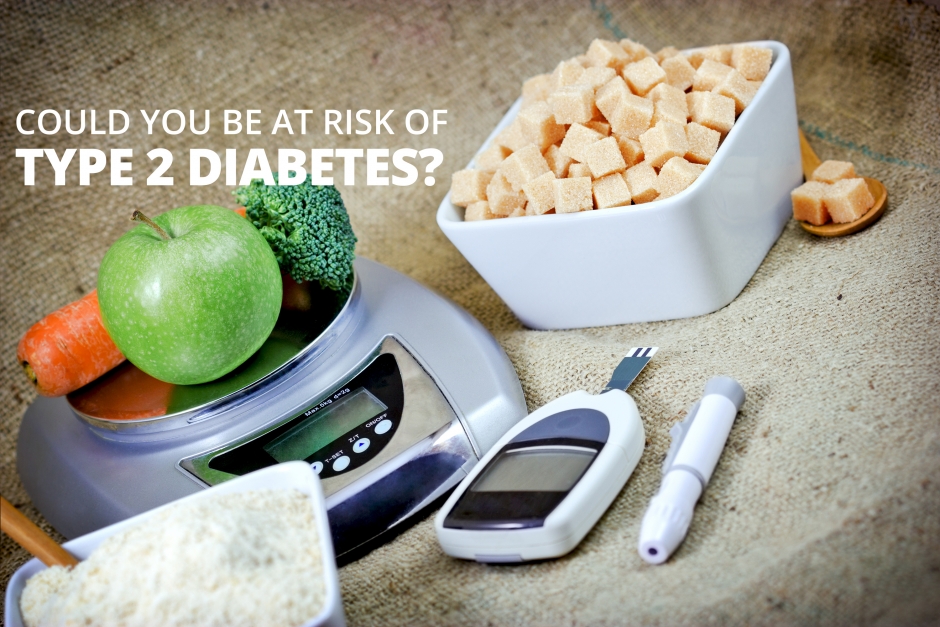There are 3.8 million people in the UK with diabetes, the vast majority with Type 2, and by 2025 there are projected to be 5 million people in the UK with the condition. Libby Dowling, a clinical advisor from Diabetes UK, explains how you can reduce your risk of developing Type 2 diabetes.
Left undiagnosed or poorly managed, Type 2 diabetes can have a devastating impact, not only on the person who has the condition but also on the lives of their family.
Type 1 diabetes develops if the body cannot produce any insulin. Nobody knows for sure why these insulin-producing cells have been destroyed but the most likely cause is the body having an abnormal (autoimmune) reaction to the cells. It has nothing to do with weight or lifestyle.
Type 2 diabetes – which accounts for about 90 per cent of cases – develops when the body can still make insulin but not enough, or when the insulin that is produced does not work properly. Up to 80 per cent of cases of Type 2 diabetes could be prevented or delayed through healthy lifestyle changes.
Because the symptoms of Type 2 diabetes – feeling thirsty, needing to go to the loo more often, feeling tired or losing weight – can come on slowly and often be put down to getting older, people can live with the condition for up to 10 years before being diagnosed. This puts them at greater risk of developing the serious complications associated with diabetes.
That’s why it’s so important for people to understand the importance of having a risk assessment for Type 2 diabetes and enable people to understand their own personal risk of developing the condition.
Once people have their risk checked, either online – www.diabetes.org.uk/riskscore – or by visiting a pharmacy, those at high risk will then be asked to visit their GP for a test for Type 2 diabetes and given information about how to reduce their risk. Or if you are concerned that you might be at high risk, you can speak directly to your GP.
As well as identifying those at high risk, risk assessments can also identify some of the estimated 850,000 people in the UK who have undiagnosed Type 2 diabetes. This gives people the chance to start managing their condition and so reduce their risk of developing long-term complications.
Blindness, amputations, kidney failure, heart attack and stroke are just some of the complications that Type 2 diabetes can lead to. Some people mistakenly believe Type 2 diabetes is a ‘mild’ condition. If it is detected early and well managed it is possible to live a long and healthy life. But people need to understand that it can have very serious consequences.
The good news is that for many people, finding out they are at high risk of Type 2 diabetes or being diagnosed with it can be the start of a process of making healthy lifestyle changes. Some people who discover they are at high risk of the condition lose weight and their risk reduces as a result. For those who are diagnosed with the condition, making the necessary adjustments to diet and lifestyle can have a major impact on the successful management of Type 2 diabetes. Sticking to the medication prescribed for you and ensuring you get the healthcare you are entitled to – visit www.diabetes.org.uk/15-essentials – will also help.
If people want to reduce their chances of developing Type 2 diabetes then making small changes that you can stick to in the long term is a good approach. Up the amount of vegetables and fruit you eat and reduce your intake of sugar, fat and salt. Try to have more meals cooked from scratch, so you know exactly what’s in them. And check the food labels carefully on ready meals and go for ones that are low in fat, salt and sugar.
When it comes to exercise it’s great to do some walking and make exercise part of your everyday regime. So try and walk instead of always getting in the car to make a short errand. Or take up something that you know that you will enjoy and stick to, such as cycling or going dancing.
Here to help
If you would like to speak to someone from Diabetes UK then contact the charity’s Careline on 0345 123 2399.
How I did it
Getting over Type 2 diabetes
By Barry Landsberg
As long as I can remember, I have loved eating. During my early teens, my school gave out exercise as a punishment. If we misbehaved, we had to run round the tennis courts, and the worse the crime, the more rounds we had to do. This probably was a factor in my strong avoidance of exercise of any kind.
By the time I reached fifty, I was habitually overeating, locked in a belief I could never lose weight, and accepted that I would be overweight for the rest of my life. All of this changed with the shock of being diagnosed with Type 2 diabetes. I spent some time deciding how I would handle this. What I wished for was to reach a healthy weight and blood sugar level, and maintain it easily and naturally for the rest of my life.
To achieve this almost impossible dream, I mindfully chose what habits I wanted to cultivate, what foods I wanted to start liking, so that every day was an investment towards a lifelong healthy lifestyle that was increasingly easy to maintain. In addition I developed an arsenal of mental tools to help me. I chose the gym as the place to start exercising, and also to gradually start moving to healthier eating. I learned to enjoy eating slightly smaller amounts, and more importantly slowly switched from sweet and processed food to more nutritious food, also reducing my carbohydrate intake.
Eventually I lost 40kg and my blood sugar became normal again. 12 years later, I was discharged from the diabetic register. I still exercise regularly, and really enjoy being fit. I also still love eating, but now in a healthy way with no feeling of deprivation whatsoever. I am an ex-diabetic, and with my current lifestyle intend to stay that way.





